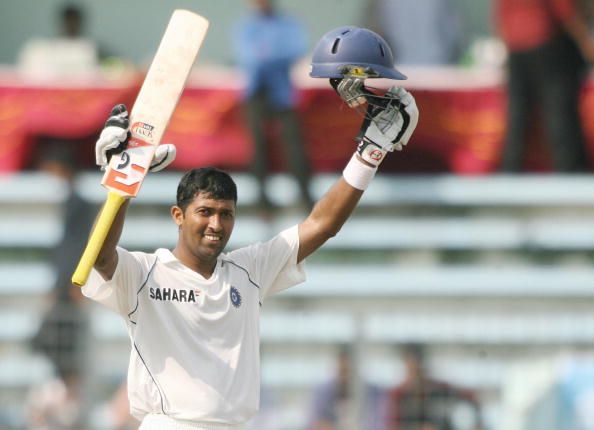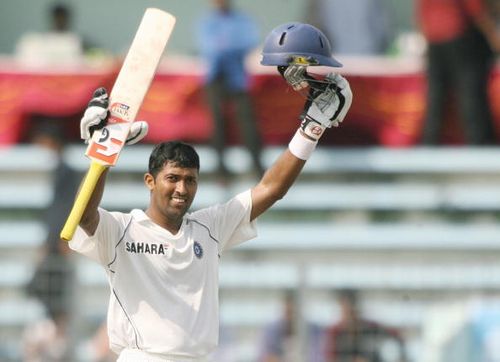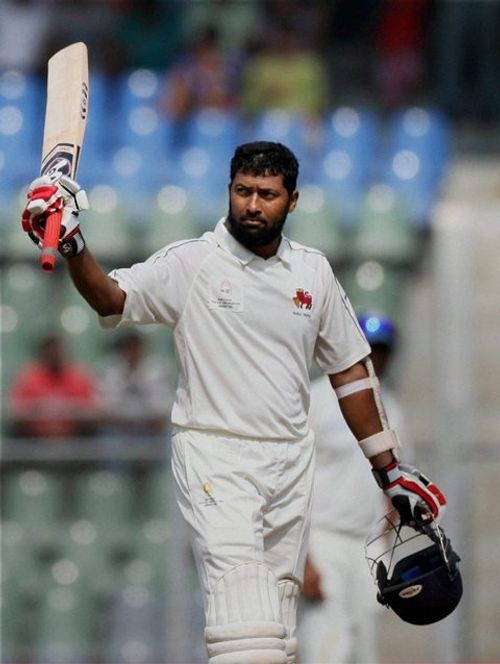
Wasim Jaffer: An example of Indian ignorance

Aristotle’s precept on tragedy states that the protagonist of a particular tragic performance must be an admirable, yet flawed character; a very human personality, whom the audience can understand and sympathise with. If Shakespeare lived in our time and wrote an anguished account of Indian cricket, Wasim Jaffer would be his principal character.
Jaffer exudes simplicity. His down-to-earth mannerisms have won over a great number of cricket enthusiasts, and that’s even before laying eyes on him when he wields the bat. With the bat in his hand, Jaffer is like a stone-faced convict. You can throw everything at him, ask him your questions, pour your aggression all over him, but he’ll withstand, though far more elegantly than a felon ever would. Comparisons with a certain Rahul Dravid are usually scoffed at as slander, but if you care to read between the lines, you’d deem them legitimate. That is not to say that Jaffer is as good a batsman as Dravid ever was, but it certainly implies that he wasn’t given the opportunity to be so.
The tragedy of Wasim Jaffer’s career is that he’ll only ever be remembered as a great Ranji Trophy batsman. His record for Mumbai is unparalleled and it won’t be surprising to see his name appear in ‘greatest’ lists years down the line. It isn’t just his technique that leaves you in awe, but the sheer volume in which he accumulates runs, that too on a regular basis. Apart from having scored the most number of centuries in the Ranji Trophy, a record he broke this year, his consistency for the Mumbai team leaves one speechless. In 18 seasons for them, he has failed to average fifty or above only five times, and in three of those instances he averaged in and around the 45-mark. In the just concluded tournament, Jaffer averaged 75 from the 7 games played. His cumulative average in the last four seasons is 63.25 with eleven hundreds and eleven fifties. And the number of matches he played for India during that period? Zero.
Jaffer impressed with his captaincy too, clinching the Ranji Trophy twice while leading the Mumbai side. Once a prospective captain for Team India, Jaffer is now left to churn out run after run without reaping the rewards. But the smile on his face is almost glued, no matter what.
He played 31 Tests for India between 2000 and 2008, flitting in and out of the team without any credible reasons for his inconsistent ousters. While not compiling as great a record as his Ranji exploits, Jaffer certainly played respectably for India, averaging 34 and hitting five hundreds, statistics which would give you more opportunities than most. But after two consecutive series failures, Jaffer was dropped, never to be called back, in 2008.
The first case for Jaffer’s inclusion in the Indian team does not lie in his performances for Team India, or even the Ranji Trophy, but in the failure of those who have been picked ahead of him. The second comes from the profound inconsistency the selection team devotes to while choosing squads.
India have stuck with Virender Sehwag and Gautam Gambhir for far too long. While Sehwag was axed from the ODI squad for the series against Pakistan and England, his return is almost imminent in a short while. Gambhir, on the other hand, has been struggling for far too long in all formats of the game, although he did reclaim some of his lost glory against England where he hit a couple of fifties. Sehwag has been in and out of the team all through his career. There is no doubting his ability, but when out of form, it’s better to place a player out of the team rather than at the top of the order. This opportunity was not provided to Wasim Jaffer, for reasons unknown. Gambhir has been having a string of bad scores from what seems like a time long, but he still is persisted with in the team. Jaffer was dropped after two bad series, which leads us to the second point, the ghastly inconsistencies the selection committee indulges in.
 If the Ranji Trophy is the stepping stone towards a place in the national team, then all the youngsters working hard today waiting for such an opportunity should immediately be told that this is an outright lie. Australia’s model of bringing in cricketers, regardless of their age, has worked wonders. They’ve had players like Justin Langer, Matthew Hayden and Michael Hussey make it big at an age when we feel that Indian players have to stop playing and start commentating. India puts its emphasis on the youth. But when you’re giving endless chances to the likes of Piyush Chawla, Rohit Sharma, and Ashok Dinda, something has to be done. Do we have a lack of talent in India? Far from it. We are a flowering pot of genius cricketers, who model themselves on Sachin Tendulkar and Sunil Gavaskar, arguably the greatest batsmen ever. If India wants to inculcate the youth into the team, they will have to display the right role models. Giving Chawla and Sharma a thousand and one opportunities does not bear well for the future.
If the Ranji Trophy is the stepping stone towards a place in the national team, then all the youngsters working hard today waiting for such an opportunity should immediately be told that this is an outright lie. Australia’s model of bringing in cricketers, regardless of their age, has worked wonders. They’ve had players like Justin Langer, Matthew Hayden and Michael Hussey make it big at an age when we feel that Indian players have to stop playing and start commentating. India puts its emphasis on the youth. But when you’re giving endless chances to the likes of Piyush Chawla, Rohit Sharma, and Ashok Dinda, something has to be done. Do we have a lack of talent in India? Far from it. We are a flowering pot of genius cricketers, who model themselves on Sachin Tendulkar and Sunil Gavaskar, arguably the greatest batsmen ever. If India wants to inculcate the youth into the team, they will have to display the right role models. Giving Chawla and Sharma a thousand and one opportunities does not bear well for the future.
Wasim Jaffer, the tragic hero, certainly does have a flaw. It’s in his slight demeanor, where it seems like he has given up hope on being called up again. A player of his class needs to have that drive within him to break back into the limelight, but then again, we don’t know how it is to be in his position. Maybe he will get his opportunity against Australia. But it’s more likely that a less-deserving player might make his debut for India, while Jaffer scores another hundred somewhere in front of a few hundred spectators in a corner of Indian ignorance.